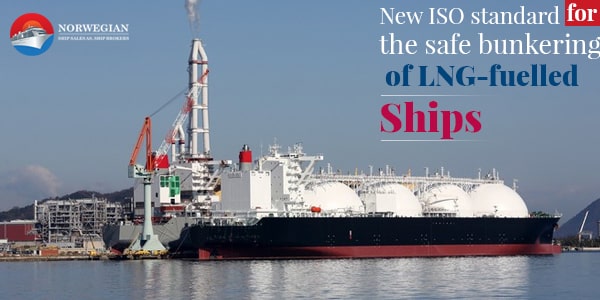Most of the ships in Northern Europe has been using LNG or liquefied natural gas as the fuel source for years now. LNG is known to be one of the best sources of fuel that is safe for the environment. Over the growing concern of carbon footprint left behind by the vessels, initiatives have been undertaken that prompt all ships to use LNG as their fuel source. During the last few years, the number of transitions made to using LNG fuels has also increased significantly, bringing good news for the industry.
But as more and more vessels are switching to the use of LNG, the need to standardize LNG operations on an international level is becoming pivotal. To ensure that LNG is being used in a safe and sustainable way, new ISO standards are being introduced as well. This also keeps LNG bunkering in check. But why LNG? Why does it need to be kept under scrutiny? Why do we need internationally introduced standards?
Before proceeding with the new set standards, let us get through with some of the definitions.
What is LNG?
An acronym for liquefied natural gas, LNG is a natural gas that is formed for millions of years from the organic remains for organisms such as plankton and algae. Though LNG is 95% methane, it is one of the cleanest fossil fuels available. The combustion of natural gas like LNG emits water vapor and very small amounts of carbon dioxide unlike the other fossil fuels, thus being clean. The emission of carbon dioxide by burning LNG is 30% lower than that of combustible fuels. It also emits very fewer amounts of nitrogen oxide and sulfur dioxide. Also, it is the lightest hydrocarbon, which means that combusting it doesn’t produce soot, fumes or dust. Most of the countries are slowly shifting to the use of LNG as the next source of fuel due to its lessened impact on the environment. The shipping industry at large has a growing affinity to shift to using LNG. It is expected that within the next 30 years, a majority of the shipping circuit will be using LNG.
What is LNG bunkering?
LNG bunkering is the process of transferring LNG from a source to the ship for its consumption. Since the impact of LNG is less on the environment compared to other heavy shipping fuels such as marine gas oil, it is highly used by the shipping industries. A steady supply of LNG also makes it easily available at an affordable price. LNG bunkering is an extensive process and includes the participation of stakeholders, LNG suppliers, shipping owners, buyers, sellers, safety personnel, administrators and also ports.
Why The Need for International Standards?
With the increase in the demand for LNG_fuelled vessels, the need to have an affordable LNG bunkering is also required. This is why new standards for using LNG fuels have been introduced. The main concern here is to ensure that the transfer can take place safely. The vessel operators and owners are expected to meet the newly defined safety standards along with the fuel quality requirement.
One ship travels a great distance and might have to make stops in different stops. This means that a large number of people and institutions will be involved in dealing with LNG. With standard policies to follow, confusion seizes to exist. No matter where the ship bunkers, the common set of rules will make it easier to handle the LNG fuel.
Thus, it can be easily concluded that with the new International Standards for LNG fuels set by ISO, the shipping industry will get at ease. The use of LNG will become safer and more functional. With the rise of the significance of LNG fuels in the shipping industry, it can be expected that these rules will come in handy!


